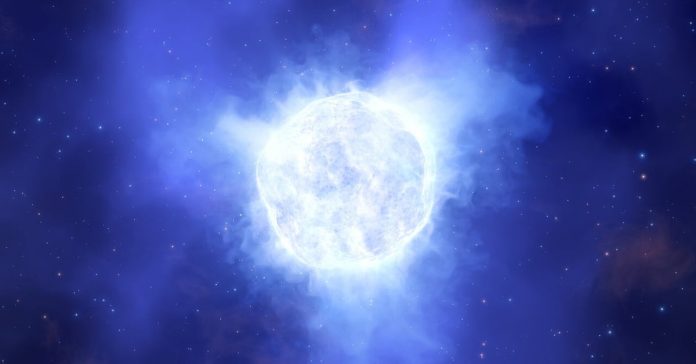Using the X-SHOOTER and the ESPRESSO (Echelle Spectrograph for Rocky Exoplanet- and Stable Spectroscopic Observation) instruments on ESO’s Very Large Telescope (VLT), astronomers have monitored a massive luminous blue variable star in a compact dwarf galaxy called PHL 293B and surprisingly observed the sudden disappearance of the stellar signatures. They think this could indicate that the star either became less bright and partially obscured by dust or collapsed into a black hole without producing a supernova.
Also known as the Kinman Dwarf, PHL 293B lies approximately 75 million light-years away in the constellation of Aquarius.
In the 2000-2010s, astronomers studied a mysterious giant star in this galaxy and their observations indicated the star, which is some 2.5 million times brighter than the Sun, was in a late stage of its evolution.
Trinity College Dublin astronomer Andrew Allan and colleagues wanted to find out more about how very massive stars end their lives, and the object in PHL 293B seemed like the perfect target.
But when they pointed VLT to the galaxy in 2019, they could no longer find the telltale signatures of the star.
“Instead, we were surprised to find out that the star had disappeared,” Dr. Allan said.
Luminous blue variables are unstable, showing occasional dramatic shifts in their spectra and brightness.
Even with those shifts, they leave specific traces astronomers can identify, but they were absent from the data the team collected in 2019, leaving them to wonder what had happened to the star.
“It would be highly unusual for such a massive star to disappear without producing a bright supernova explosion,” Dr. Allan said.
“We may have detected one of the most massive stars of the local Universe going gently into the night,” said Dr. Jose Groh, also of Trinity College Dublin.
The ground-based and archival Hubble data indicated that the star in PHL 293B could have been undergoing a strong outburst period that likely ended sometime after 2011.
Luminous blue variable stars such as this one are prone to experiencing giant outbursts over the course of their life, causing the stars’ rate of mass loss to spike and their luminosity to increase dramatically.
Based on their observations and models, the researchers suggest two explanations for the star’s disappearance and lack of a supernova, related to this possible outburst.
“The outburst may have resulted in the luminous blue variable being transformed into a less luminous star, which could also be partly hidden by dust,” they said.
“Alternatively, the star may have collapsed into a black hole, without producing a supernova explosion.”
“This would be a rare event: our current understanding of how massive stars die points to most of them ending their lives in a supernova.”








